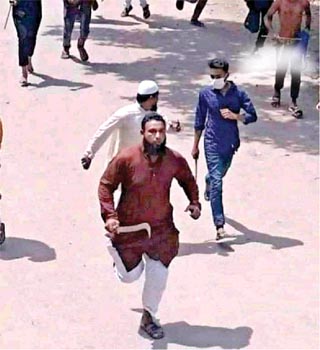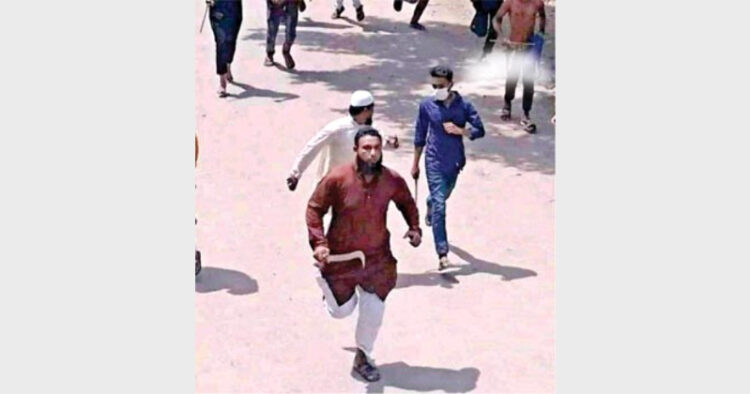In the guise of protesting against the recent visit of Indian Prime Minister Narendra Modi, radical Islamist elements in Bangladesh unleashed large-scale attacks on innocent Hindus, and destroyed hundreds of Hindu temples and properties. The violence was engineered by pro-jihadi elements to upset the bonhomie that exists between the two countries and to embarrass Bangladeshi Prime Minister Sheikh Hasina who has taken a stern stand against radicalisation. The Bangladesh administration has launched a massive crackdown on jihadists who were operating hand-in-glove with Pakistani forces

At least 13 people were killed and scores were injured on March 28 as protests continued against Prime Minister Narendra Modi’s visit to Bangladesh as part of celebrations for the country’s 50th anniversary. Prime Minister Modi was on a two-day visit to Bangladesh between March 26 and March 27. Bangladesh officials said that the violence was aimed at destroying the good relations that exist between the two countries.
Five people were killed on March 25, and six on March 26 after the police personnel opened fire and used tear gas to disperse thousands of protestors who were enforcing a countrywide hartal they called to denounce violence at a previous protest against Modi’s visit. On March 27, two youths died in Brahmanbaria in police firing. The Bangladesh security forces had to use force to quell violence triggered by jihadi outfits such as Hefazat-e-Islam and Jamaat-e-Islam. The security forces opened fire after the violence seemed to spiral out of control. In retaliatory action by the forces, a total of 13 jihadists lost their lives and hundreds sustained injuries, according to some reports. Brahmanbaria has seen the maximum amount of violence. Members of the radical Islamist outfit Hefazat-e-Islami attacked a train in Brahmanbaria, injuring ten passengers. “They attacked the train and damaged its engine room and almost all the coaches,” a police official told Reuters on the condition of anonymity.
Hefazat leaders made provocative remarks which contributed to flaring up of violence. “Brahmanbaria is burning. Various government offices were set on fire indiscriminately. Even the press club was attacked and many injured, including the Press club president. We are in extreme fear and feeling really helpless,” said a report.
On March 26, six more protesters were killed in the police firing. At Narayanganj, Hefazat-e-Islamist activists chanted “action, action, direct action” in an ominous development. After Jinnah’s call for ‘Direct Action’, lakhs of Hindus were massacred in Bengal in 1946. The Hefazat group has given a nationwide strike call on April 2 to protest the police crackdown. An Indian official has said that the main motive of the Hefazat group was to radicalise Bangladeshi society by its potent mix of religion and power politics. “Why Hefazat (protection) of Islam should be at the cost of annihilating all ‘non-believers’ is the most perplexing question that Islamic scholars must answer,” said an Indian political commentator.














Comments